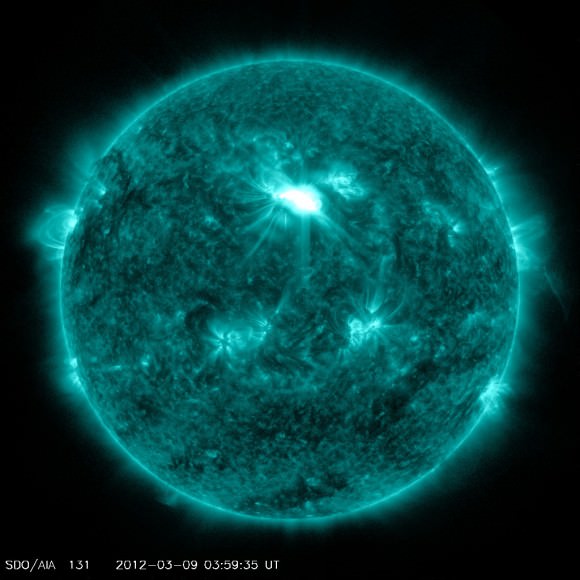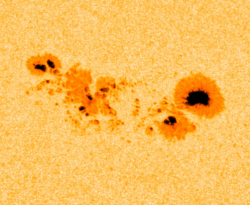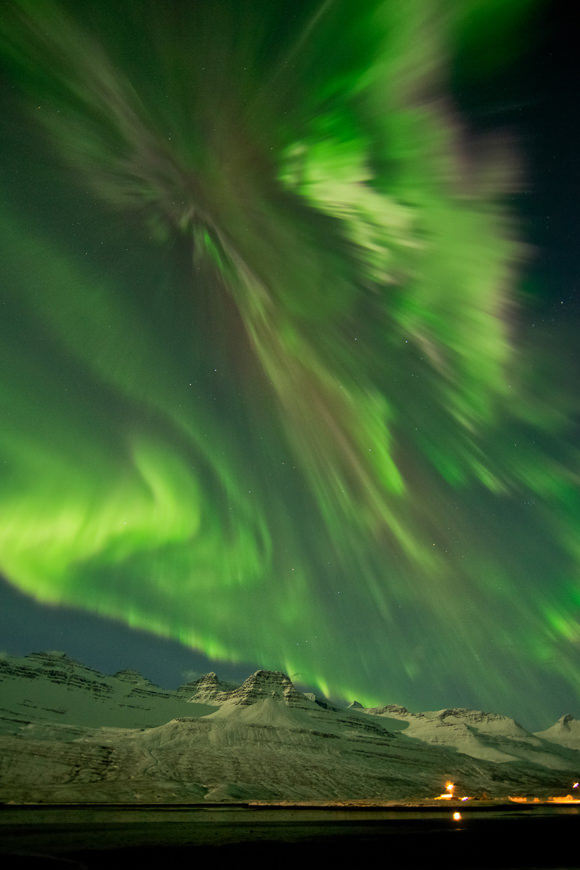[/caption]
Even though the CME unleashed by active region 1429 initially hit Earth a bit softer than expected yesterday (read why here), it ended up gaining some extra “oomph” once the magnetic fields lined up right… enough to ignite some amazing displays of aurorae like the one shown above over Iceland, photographed by Jónína Óskarsdóttir!
And that wasn’t the last we’d hear from AR1429 either; at around 10:30 pm EST on March 8, the region lit up again with an M6.3 flare… although smaller than the previous X5.4-class flare, it produced a temporary radio blackout and released another Earth-directed CME, which is expected to arrive in the coming hours.
Dr. Alex Young, solar physicist at NASA’s Goddard Space Flight Center, reported this morning on his blog The Sun Today:
The flare produced a temporary radio blackout as well as a possible Earth directed CME. We will have to wait and see. The sunspot group still shows potential for more activity as the region sits near the central meridian of the Sun. Facing directly at Earth this is a prime location to produce more geo-effective solar activity.
Here is a look at the flare captured by the 131 Angstrom wavelength camera on the Solar Dynamics Observatory (SDO). This shows us the super hot 5-10 million degree plasma produced by the solar flare.

Dr. Young also noted that bright aurorae could be visible in lower latitudes as a result of the latest CME, expected to impact Earth at 1:50 am EST:
Aurora watchers at higher latitudes such as the northern US should keep their eyes out in the early morning and maybe even into tonight depending upon how this storm progresses.
Many times the size of Earth, active region 1429 has been the source of at least five significant flares over the past week. As it moves across the face of the Sun, its shape has become more and more complex — a sure sign, notes Dr. Young, that magnetic forces within it are twisting further and further towards a breaking point. And when they snap, there’s a flare.
“It’s interesting, they kind of look like a mole,” Dr. Young said during an interview on March 8. “And when you monitor a mole, they tell you as long as it stays in a nice symmetric shape and it doesn’t become really complicated and complex, it’s okay. It’s the same sort of thing with sunspots… when they become complicated and twisted, then that mean the magnetic fields inside of them have become more twisted, like a rubber band twisting around until little knots pop up in it. And right now we have been monitoring that sunspot and it is getting more complex.”
(See a photo of AR1429 taken from New Mexico!)
As far as the effects we see here on Earth are concerned, that’s all about the resulting CME — the enormous cloud of charged solar particles that gets blown out into the Solar System. If that cloud impacts Earth’s magnetic field, and if the direction of the cloud happens to be opposite the direction that Earth’s magnetic field is pointed, a lot of energy is “pumped into” our magnetosphere, resulting in a geomagnetic storm.

During yesterday’s CME impact the Earth’s magnetic field was pointed north — the same direction as the CME. As a result much of the solar material simply flowed along and over it. But the wake ended up getting caught up in the south-directed part of the field, ramping up the energy index (measured as Kp) as the hours progressed. As yet there’s no way to know for certain how a particular CME will align with Earth’s magnetic field.
According to physicist Dr. Philip Scherrer of Stanford University, “we still need better — or perhaps faster — models” to be able to accurately predict the orientation of incoming CMEs. “We are perhaps a few years of research away from completing the picture.”
Currently the geomagnetic storm level is at G3, which according to the NOAA’s Space Weather Scale could result in voltage problems on power systems, increased drag on satellites and “intermittent satellite navigation and low-frequency radio navigation problems… and aurora has been seen as low as Illinois and Oregon.”
So keep an eye out for northern lights in tonight’s skies, and stay tuned for more updates!
Thanks to Dr. Alex Young for the information! You can follow him on Facebook and Twitter and on his personal blog The Sun Today. Also thanks to Dr. Phil Scherrer at Stanford University and SpaceWeather.com for the heads-up on Jónína’s photo. See more of her aurora photography here. (Used with permission.)

